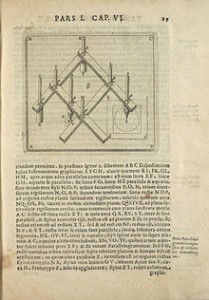NEW YORK
U.S. authorities returned two antique books to the National Library of Sweden that were stolen by a former library employee who committed suicide, officials said.

The two books being returned Thursday were printed in the 1600s, according to authorities:
- Christopher Scheiner book entitled “Oculus, hoc est: fundamentum opticum, in quo ex accurate oculi anatome, abstrusarum experientiarum sedula pervestigatione,” printed in 1619 by Danielem Agricolam Oeniponti (the “Scheiner book”)
- Nicolo Sabbattini book entitled “Practica di fabricar scene, e machine ne’teatri. Ristampata di nouo coll’ Aggiunta del secondo libro,” printed in 1638 by Battista Giouannelli Pietro de’Paoli e Gio (the “Sabbatini book”).
“For hundreds of years, the National Library of Sweden’s collection of books, maps, and manuscripts was treasured by the kings and queens of Sweden. In many ways, the Library contains the cultural memory of Sweden,” Deputy U.S. Attorney Richard Zabel said. “The theft of pieces of a nation’s memory and heritage creates holes in its intellectual soul. There is no repair for such holes without the recovery of what was taken. I’m proud that this Office has been at the forefront of recovering what has been taken from many different nations’ cultural histories, including Sweden today.”
The two books are part of a group of at least 56 rare or one-of-a-kind books that were stolen from the National Library of Sweden’s collection by Anders Burius, a former employee of the Library, between 1995 and 2004.
After stealing the books, officials said Burius consigned or sold the books to Ketterer Kunst, an auction house in Germany. In 2004, Burius confessed to the book thefts and admitted to Swedish law enforcement officials that he had sold and/or consigned the books to Kunst under the alias “Carl/Karl Fields.”
Shortly after confessing to the thefts, Burius committed suicide. Swedish authorities subsequently received information that 13 of the stolen books had been sold by Kunst to people in the United States, according to authorities.
The Scheiner book, which is a famous work in the history of optics, was purchased on May 28, 1999, by bookseller Jonathan A. Hill, who had no knowledge of the book’s theft, officials said.
Hill subsequently sold the Scheiner book to Cornell University, which also had no knowledge of the book’s theft, and which, after being contacted by the FBI about the theft, voluntarily agreed to return the book to the Library.
The Sabbatini book, an important work concerning stagecraft and theater machinery, was purchased on November 19, 2001, by Richard Lan, a gallery owner in New York.
Lan had no knowledge of the Sabbatini book’s theft and, after being contacted by the FBI about the theft, voluntarily agreed to return the book to the Library
Federal prosecutors entered into stipulations with Cornell University and the gallery owner, in which both Cornell University and Lan consented to tender their respective books to the FBI, to allow for the return of these books to the National Library of Sweden.
The stipulations were so ordered bya federal court in June, officials said.
Officials said the Scheiner book and the Sabbatini book were returned to representatives of the National Library of Sweden Thursday at a repatriation ceremony held at the U.S. Attorney’s Office in New York.


